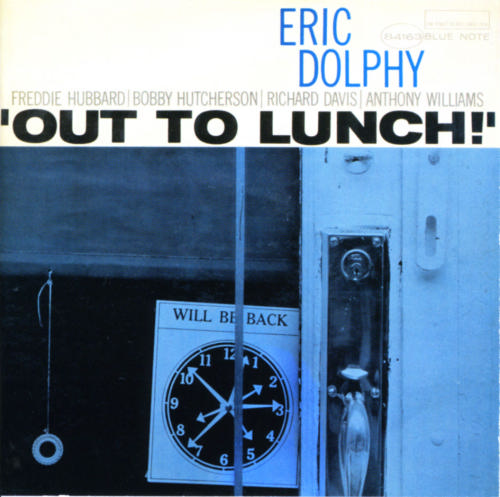
When you hear music, after it’s over, it’s gone, in the air. You can never capture it again.
~Eric DolphyEric Dolphy was a true original with his own distinctive styles on alto, flute, and bass clarinet. His music fell into the “avant-garde” category yet he did not discard chordal improvisation altogether..
~Scott Yanow (allmusic.com)
Charles Mingus Sextet featuring Eric Dolphy Take The A Train (Live, Norway 1964):
From Wikipedia:
| Birth name | Eric Allan Dolphy, Jr. |
|---|---|
| Born | June 20, 1928 Los Angeles, California, United States |
| Died | June 29, 1964 (aged 36) Berlin, Germany |
| Genres | Jazz, avant-garde jazz, post-bop, third stream, free jazz |
| Occupations | Bandleader, saxophonist, flutist,bass clarinetist, composer, sideman |
| Instruments | Alto saxophone, flute, bass clarinet, soprano clarinet, baritone saxophone, piccolo |
| Years active | 1949–1964 |
| Labels | Verve, Impulse!, Prestige, Blue Note, Mercury |
Eric Allan Dolphy, Jr. (June 20, 1928 – June 29, 1964) was an American jazz alto saxophonist, flutist, and bass clarinetist. On a few occasions, he also played the clarinet, piccolo, and baritone saxophone. Dolphy was one of several multi-instrumentalists to gain prominence in the 1960s. He was also the first important bass clarinet soloist in jazz, and among the earliest significant flute soloists.
His improvisational style was characterized by the use of wide intervals, in addition to using an array of extended techniques to reproduce human- and animal-like effects which almost literally made his instruments speak. Although Dolphy’s work is sometimes classified as free jazz, his compositions and solos were often rooted in conventional (if highly abstracted) tonal bebop harmony and melodic lines that suggest the influences of modern classical composers Béla Bartók and Igor Stravinsky.
Here is a live version of “G.W.” (a tribute to his mentor – trumpeter, composer, arranger, and big band leader Gerald Wilson) from 1961:
Album of the day – Out To Lunch (1964):
| Out to Lunch stands as Eric Dolphy’s magnum opus, an absolute pinnacle of avant-garde jazz in any form or era. Its rhythmic complexity was perhaps unrivaled since Dave Brubeck’s Time Out, and its five Dolphy originals — the jarring Monk tribute “Hat and Beard,” the aptly titled “Something Sweet, Something Tender,” the weirdly jaunty flute showcase “Gazzelloni,” the militaristic title track, the drunken lurch of “Straight Up and Down” — were a perfect balance of structured frameworks, carefully calibrated timbres, and generous individual freedom. ~Steve Huey (allmusic.com) |
| Out to Lunch is one of the finest records of its kind. This record is easily at the caliber of A Love Supreme and The Shape of Jazz to Come. That may seem a mighty bold statement. Well, dear readers, I mean every word. Out to Lunch flows soft and serene, then edgy and forthright. The magic is the way Dolphy leads his band. A touch of ease drops over the soundscape of the tracks before the trademark blast of jagged rips and chops run to the edge off a cliff and dangle with sounds that shake jazz’s boundaries. ………. Though not for the faint of heart, this is a certain bible for the avant-garde players to come such as Anthony Braxton, Albert Aylers and John Zorn. Although the Prestige recordings spark a point that critics often argue, Dolphy was a freer player than Coltrane but held more to tradition than Coleman. Is this true? Out to Lunch shows Dolphy more apt for sonic annihilation than keeping in tradition, but the playing is in many ways a freer flight than what Coltrane was doing at the same period. None the less Dolphy shows his passion and unique style that would influence future players still to this day. ~Trevor Maclaren (allaboutjazz.com) |
– Egil & Hallgeir


